Foumban
There is more than just Bamileke in the west of Cameroon. We make our way from Bafoussam, the regional centre where we spent the night, to the town of Foumban, further to the north. Even though it is only 70 km, the effect of ‘north’ becomes quickly visible, in an increasing number of mosques, many charming and small again, like we saw earlier in Chad. Where the kingdoms around Bafoussam are perhaps predominantly Christian, Foumban is mostly Muslim – although everybody is at pains to stress that Christians and Muslims happily live together here.
We are in Foumban to see the palace of the sultan, the leader of the Bamoum people in Western Cameroon. The sultan is the 20th in a dynasty that can be traced back to 1394, and includes no less than five women – on of which ruled for a mere 30 minutes (!), before handing over the throne to her son. The main protagonist of the dynasty was the 17th, Ibrahim Njoya, who managed to change from Islam to Christianity, because he didn’t like the ban on smoking and alcohol, then left Christianity and established his own religion, because he didn’t like the concept of monogamy (although in the end he reverted to Islam again).
The palace is from 1917, quite an attractive brick building with wooden balconies. In the courtyard we spot everywhere the sultan’s symbol, a two-headed snake. We only get a glimpse of the inside of the palace, a no-go area for tourists – or perhaps we didn’t offer enough ‘encouragement’. The official tour is for the top floor only, which has been transformed into a museum, to the greater glory of the sultan, but with a nice enough collection of artefacts. Nothing compared to Baham yesterday, but some of the sculptures, and especially the colourful beadwork for which the Bamoum are famous – in the form of thrones, for instance, and animal masks – are impressive. Unfortunately, no photos, again (and my illegally shot pictures are pretty poor).
Next to the palace a new museum is being built, in the form of a monstruous spider – the symbol of hard work -, with the entrance and exit the two mouths of the double headed snake. The exhibition is not yet ready, so the museum is still closed, which didn’t prevent the ticket office from charging us an entrance fee.
We wander around a bit more in Foumban, visit the market and a forger. Forging is big business, apparently, lots of bronzes and sculptures of lesser alloys are being made, from small figurines to the most outrageous statues and masks. Not exactly my taste, and horrendously expensive, too. Much cheaper are the ‘original antique masks from my grandfather’, as our local minder tells me: he owns a shop selling those, in the end for as little as 30 US$. A quick look around shows that in many other shops there are also numerous grandfather relics, and no doubt if we negotiate fiercely, for even less. But – incredulously – we maintain discipline, realizing that we still have a long trip ahead, and besides, already a pretty full house, so we refrain from buying. Not that any of these masks are really old, of course, their apparent age is a function of how many weeks they have been buried to make them look old. But some of them were quite nice, and would not have been out of place in our collection.
Now I already regret myself. Afterall, there is always DHL.
Next: the road to Douala
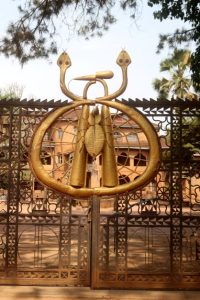
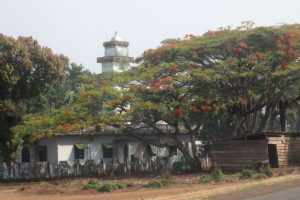
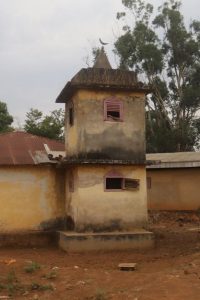

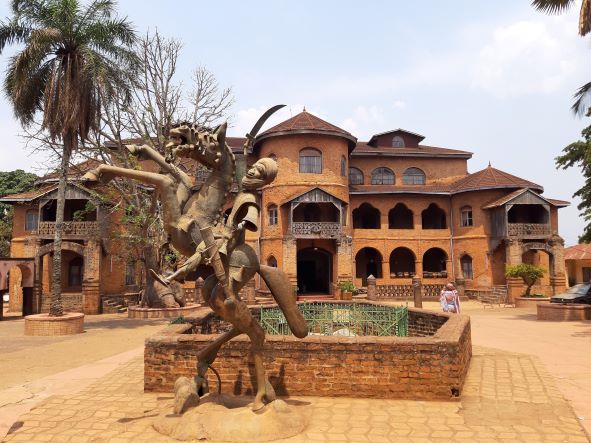
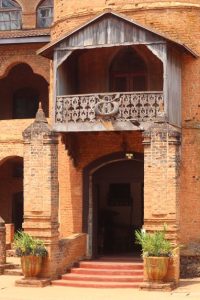


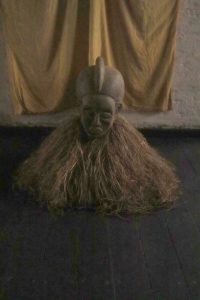
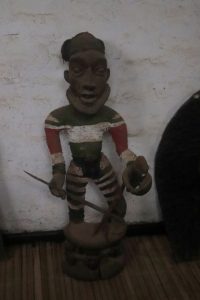
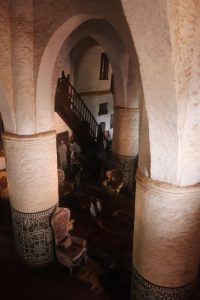
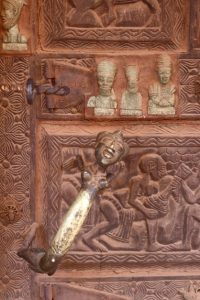



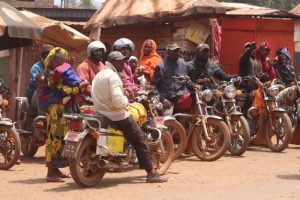

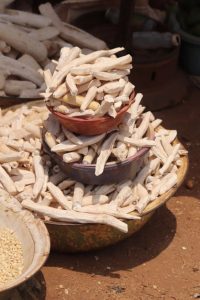
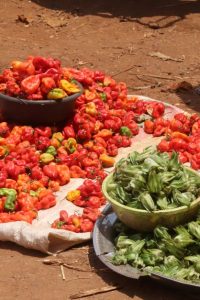

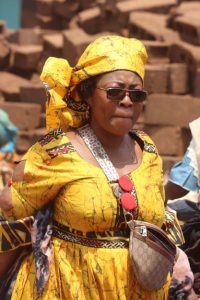
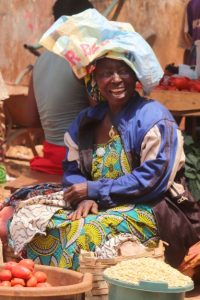











A nice stop in Foumban with a market and masks. And a lot of Nice mosques!